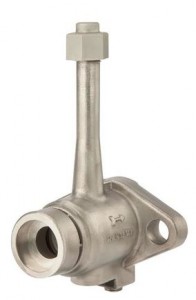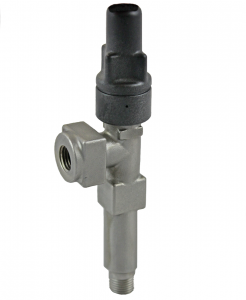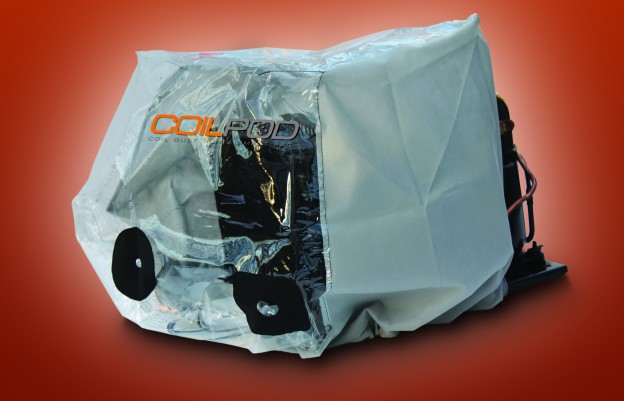WESTMONT, IL – HANTEMP Controls, a manufacturer of stainless steel industrial refrigeration
components, is proud to introduce the QSV Quick Service Valve as the latest addition to its
product line. The QSV is a stainless steel ball valve designed to control flow of refrigerants in
both commercial and industrial refrigeration systems. The valve is available in sizes ¾” to 1¼”
with socket weld or butt weld end connections.

QSV Quick Service Valve
The QSV’s stainless steel valve body is flanged on one end and weld in-line on the other. Featuring a slotted grove on the inlet of the valve that acts as a heat break, there is no need to
disassemble the valve for welding. Applications for the QSV Quick Service Valve include service valve for the HANTEMP COBRA-NECK® Ball Valve, close coupling to controlled valves such as strainers and check valves, and isolation of float switches, oil pots and liquid level columns.
Additional features include a ¼” gauge port for oil draining and pump out, a full 90° rotation from open to close and a provided seal cap for insulation. Stainless steel trim is also included.
The QSV Quick Service Valve joins the COBRA-NECK® Ball Valves, “SEE-SWITCH”® Float Switches, and EZWLD Flanges in HANTEMP’s product line of innovative stainless steel controls and components for industrial refrigeration.
Established in 2001 by Charles C. Hansen, former president of Refrigerating Specialties Company and founder of Hansen Technologies Corporation, HANTEMP Controls offers a unique line of stainless steel industrial refrigeration controls including COBRA-NECK® Ball Valves, “SEE-
SWITCH”® Float Switches and EZWLD Stainless Steel flanges. With professional industry
memberships, broadening manufacturing processes and new distribution operations in Europe,
HANTEMP Controls is dedicated to quality, durability and originality. For more information,
please visit www.hantempcontrols.com
Contact: Kevin Kilbride
June 2015 Marketing Coordinator
kkilbride@hantempcontrols.com
810 Burr Oak Drive, Westmont, Il.
(630) 537-1049
 The valve has been designed to overcome existing gauge valve shortcomings which include vulnerability to corrosion and no back seat for stem seal replacement. Advantages also include wrench flats for easier installation, an easily removable seal cap, and ¼” NPT connections.
The valve has been designed to overcome existing gauge valve shortcomings which include vulnerability to corrosion and no back seat for stem seal replacement. Advantages also include wrench flats for easier installation, an easily removable seal cap, and ¼” NPT connections.

